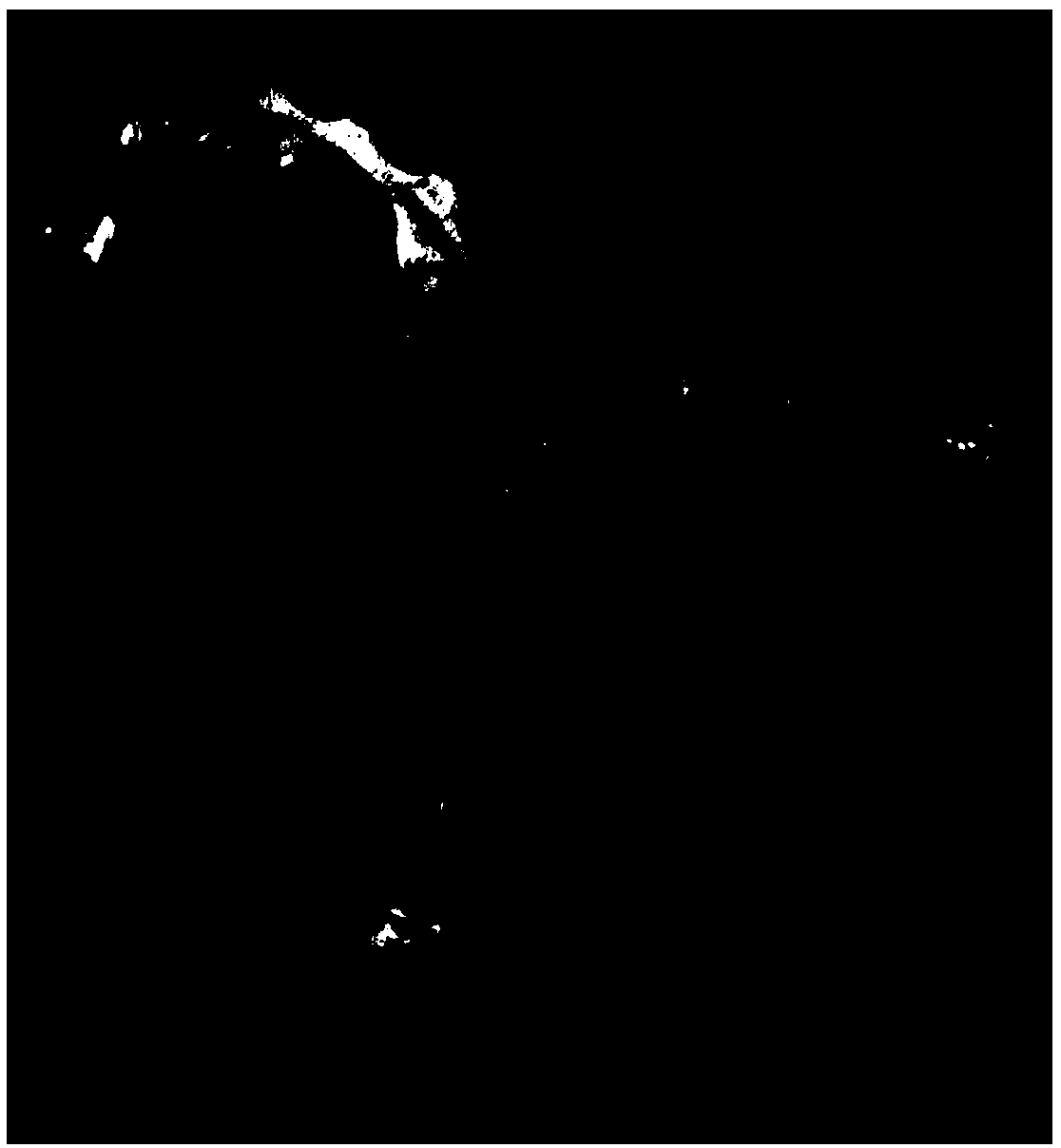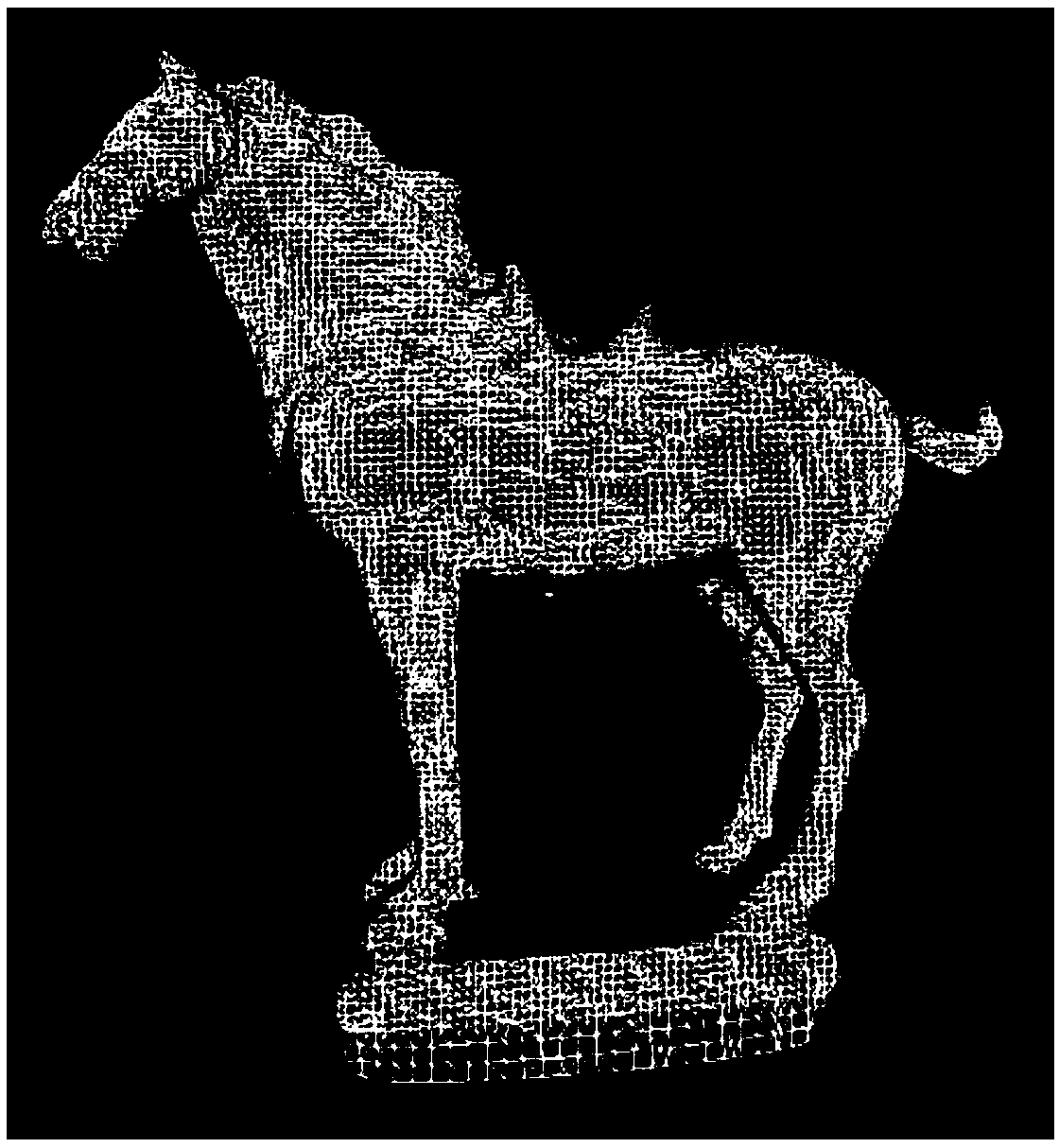Texture-based interactive mesh model cutting method and device and modeling device
A grid model and interactive technology, applied in the field of 3D modeling, can solve the problems of high operational precision, complex manual interaction process, low accuracy of edge matching of reconstructed objects, etc., to achieve precise cutting, surface mesh The effect of accurate grid edge and high processing precision
- Summary
- Abstract
- Description
- Claims
- Application Information
AI Technical Summary
Problems solved by technology
Method used
Image
Examples
Embodiment 1
[0056] Example as figure 1 As shown, a texture-based interactive mesh model cutting method of one embodiment includes the following steps:
[0057] S100. According to the corresponding relationship between the surface mesh and the texture image of the reconstructed 3D model of the object, project the mesh triangles in the surface mesh onto the texture image to obtain a texture triangle set composed of texture triangles in the texture image.
[0058] When three-dimensional modeling of an object is carried out through an image, the three-dimensional surface mesh corresponding to the object and showing the surface characteristics of the object is composed of a huge number of triangles, and the surface mesh has a mapping relationship with the texture image. That is to say, the reconstructed 3D model refers to a model that has completed texture mapping, that is, both surface grid data and model texture images, as well as the mapping relationship between surface grids and texture im...
Embodiment 2
[0090] The following describes the texture-based interactive mesh model cutting method with a specific processing flow.
[0091] Step 1: Through the mapping relationship P between the grid T and the texture M, project the triangles in the surface grid T on the texture image M, record the set of projected triangles as Tp, such as Figure 5 shown.
[0092] Step 2: Through interaction on the texture image M, a polygonal region R containing only the background is selected along the edge of the foreground.
[0093] Step 3: Traverse T p For each triangle in , judge the triangle that falls completely within the polygon R, denoted as Set in T with The corresponding set of triangles is denoted as T i , delete T in T i .
[0094] Step 4:
[0095] for T p The triangle intersecting the edge of R in , set T c ={a 0 , a 1 , a 2}, where a 0 , a 1 , a 2 is the triangle T c The three vertices in counterclockwise order. Let T c The corresponding triangle in T is T' c ={a' ...
Embodiment 3
[0116] Based on the same inventive concept, an embodiment of the present invention provides a texture-based interactive mesh model cutting device. Since the problem-solving principle of this device is similar to the aforementioned texture-based interactive mesh model cutting method, therefore, The implementation of the system can be realized according to the specific steps of the aforementioned method, and the repetition will not be repeated.
[0117] The texture-based interactive grid model cutting device of this embodiment includes: a grid projection module, a background separation module, a triangle screening module, a first surface mesh processing module, and a second surface mesh Grid processing module and new surface mesh generation module. Wherein, the grid projection module is configured to project the grid triangles in the surface grid onto the texture image according to the correspondence between the surface grid and the texture image of the reconstructed 3D model of...
PUM
 Login to View More
Login to View More Abstract
Description
Claims
Application Information
 Login to View More
Login to View More - R&D
- Intellectual Property
- Life Sciences
- Materials
- Tech Scout
- Unparalleled Data Quality
- Higher Quality Content
- 60% Fewer Hallucinations
Browse by: Latest US Patents, China's latest patents, Technical Efficacy Thesaurus, Application Domain, Technology Topic, Popular Technical Reports.
© 2025 PatSnap. All rights reserved.Legal|Privacy policy|Modern Slavery Act Transparency Statement|Sitemap|About US| Contact US: help@patsnap.com



